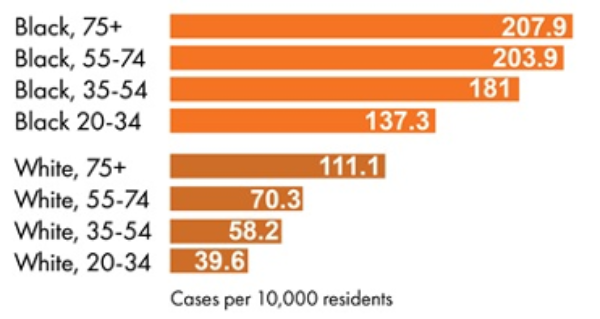What Made Pandemic Much Worse in Philly When Coronavirus Hit?
Reality Check | ecoWURD | radio
Dr. Sharrelle Barber, Research Professor & Social Epidemiologist at Drexel University, joins ecoWURD radio on WURD’s Reality Check w/ Charles Ellison for a discussion revealing how a combination of racism, segregation and other inequalities worsened the impact of COVID-19 in Philadelphia, particularly in its Black communities. She shares the findings of a recent report found here.

“Forty-five percent of people with confirmed infection were known to be Blacks, 15 percent were white, 9 percent were Hispanic, 4 percent were Asian, and 23 percent were of unknown race,” notes Barber in her latest research. “Blacks were 1.9-3.5 times more likely to have confirmed infection than whites. Mortality rates were substantially higher among Blacks (9.4 per 10,000 residents) than whites (6.3 per 10,000).
“While data disaggregated by race/ethnicity are critical, these data alone fail to fully capture the root causes of racial inequities in COVID-19 and mask the complex systems operating to produce them. This not only limits a more complete understanding of the problem, but it also restricts the scope of short- and long-term policy solutions. Structural racism and historical and contemporary patterns of residential segregation have converged to create racial inequities during this pandemic.”
“Oftentimes when I’m giving lectures or talked about these disparities, we have to first start with a period of mourning,” Dr. Barber told ecoWURD. “Just thinking about the lives that have been lost, because it has definitely devastated our community. That’s due to where people live because they know that context matters, that segregation in this city is really high, and that there are special factors and characteristics of neighborhoods – many designated – able to make both exposure and transmission of the disease much more likely. If you looked at the top five segregated neighborhoods in those zip codes in Philadelphia and compare that to the least segregated that of the five zip code, it’s very different.”




